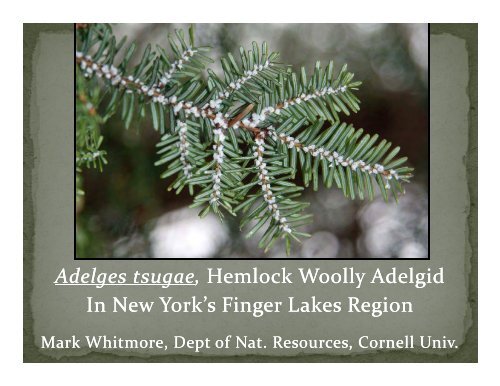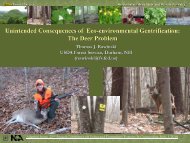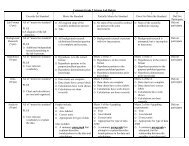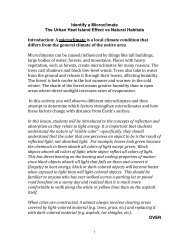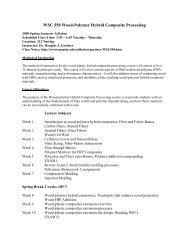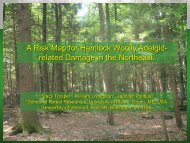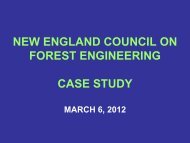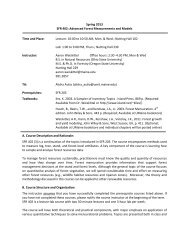Adelges tsugae, Hemlock Woolly Adelgid In New York's Finger ...
Adelges tsugae, Hemlock Woolly Adelgid In New York's Finger ...
Adelges tsugae, Hemlock Woolly Adelgid In New York's Finger ...
Create successful ePaper yourself
Turn your PDF publications into a flip-book with our unique Google optimized e-Paper software.
<strong>Adelges</strong> <strong>tsugae</strong> <strong>tsugae</strong>, , <strong>Hemlock</strong> <strong>Woolly</strong> <strong>Adelgid</strong><br />
<strong>In</strong> <strong>New</strong> York’s <strong>Finger</strong> <strong>Finger</strong> g Lakes Region g<br />
Mark Whitmore, Dept of Nat. Resources, Cornell Univ.
Ü<br />
Carolina hemlock(Tsugra caroliniana)<br />
eastern hemlock(Tsuga canadensis)<br />
2008 extent of hemlock woolly adelgid<br />
Kilometers<br />
0 100 200 400 600 800
Parthenogenetic<br />
Remarkable reproductive potential<br />
2 generations ti per year & up to t 300 eggs/female /f l<br />
Natural enemies are lacking in the eastern US<br />
No resistance by eastern hemlock hosts<br />
No area‐wide d treatments are available lbl<br />
Difficult to detect at low population p p<br />
levels
Eastern <strong>Hemlock</strong><br />
T Tsuga canadensis d i<br />
Carolina <strong>Hemlock</strong><br />
Tsuga caroliniana<br />
Western <strong>Hemlock</strong><br />
Western <strong>Hemlock</strong><br />
Tsuga heterophylla
<strong>In</strong>serts <strong>In</strong>serts st stylets lets at base of needles and feeds on xylem lem<br />
ray parenchyma cells<br />
Kills foliage g & buds<br />
Usually kills trees within 4 to 10 years<br />
Temperature<br />
Site conditions<br />
Age<br />
Age<br />
Others
Talbot Trotter, Unpublished
Talbot Trotter, Unpublished
Talbot Trotter, Unpublished
Impact on soils<br />
Stabilize shallow soils especially in steep gorges<br />
Soil chemistry made more acidic<br />
Moderate forest & stream water temperatures<br />
Trout need cooler water temperatures and thrive in streams<br />
sheltered hlt d b by hemlocks h l k<br />
Provide shelter for animals<br />
Especially important in winter<br />
critical habitat for migrating neo‐tropical birds<br />
Mortality y opens p stand to invasive species p
Laricobius nigrinus
L Laricobius L i bi nigrinus<br />
i i
Laricobius b nigrinus<br />
Two biotypes released in the <strong>Finger</strong> Lakes as part of<br />
Dave Mausel’s USFS Project.<br />
Puget Sound and Idaho.<br />
4 sites it were chosen, h t two on S Seneca LLake, k and d t two on<br />
Cayuga Lake.<br />
Beat sheet survey y in November yyielded a recovery y of one<br />
adult F1 Idaho biotype from Seneca Lake<br />
Potential establishment after just one year?
Unidentified Alien Predator
Chemical and Biological Control<br />
Control initiated two years ago on Cornell campus and<br />
Plantations Arboretum Arboretum.<br />
Priorities to protect old‐growth trees already determined<br />
in ttwo o State Parks and in one Cornell Natural Area Area.<br />
Potential for experiments to evaluate release of<br />
predators dt in i the th same locations l ti where h old‐growth ld th t trees<br />
are treated.


